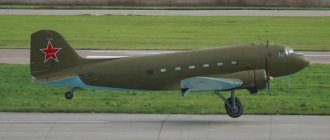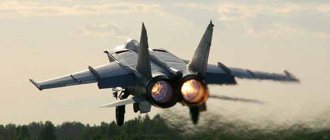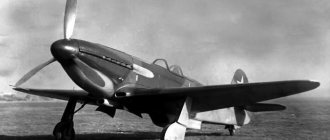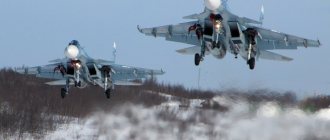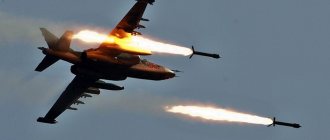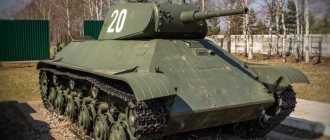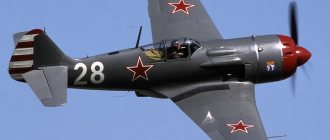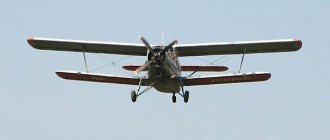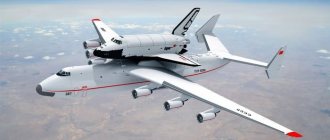Tu-160 is a supersonic strategic missile-carrying bomber with a variable-sweep wing, developed at the Tupolev Design Bureau in the 1970s-1980s. It is the largest and most powerful supersonic aircraft and aircraft with variable wing geometry in the history of military aviation, as well as the heaviest combat aircraft in the world, having the highest maximum take-off weight among bombers. It is also the fastest bomber in service. Among the pilots he received the nickname “White Swan”.
Tu-160 White Swan - video
Choice of concept
In the 1960s, the Soviet Union developed strategic missiles, while the United States relied on strategic aviation. The policy pursued by Nikita Khrushchev led to the fact that by the early 1970s the USSR had a powerful nuclear missile deterrent system, but strategic aviation had at its disposal only subsonic Tu-95 and M-4 bombers, which were unable to overcome air defense ( Air defense) of NATO countries.
It is believed that the impetus for the development of the new Soviet bomber was the US decision to develop, within the framework of the AMSA (Advanced Manned Strategic Aircraft) project, the latest strategic bomber - the future B-1. In 1967, the USSR Council of Ministers decided to begin work on a new multi-mode strategic intercontinental aircraft.
The following basic requirements were presented to the future aircraft:
- flight range at a speed of 2200-2500 km/h at an altitude of 18,000 meters - within 11-13 thousand km; - flight range in subsonic mode at altitude and near the ground - 16-18 thousand and 11-13 thousand km, respectively; — the aircraft had to approach the target at subsonic cruising speed, and overcome enemy air defenses in supersonic high-altitude mode or at cruising speed near the ground; - total combat load weight - up to 45 tons.
Projects
The project was originally created at the Myasishchev Design Bureau and was transferred to Tupolev. Below is an excerpt:
The results of design work on the supersonic multi-mode aircraft M-18 with a variable sweep wing, carried out on a competitive basis according to the Air Force requirements for a heavy strategic bomber, in 1972 were recognized as the best among similar works by the OKB MMZ "Kulon" of general designer P. O. Sukhoi ( T-4MS) and OKB MMZ "Speed" of general designer A. S. Yakovlev. The M-18 project was supported by TsAGI and NTS MAP. The commander of long-range aviation, Colonel General V.V. Reshetnikov, nicknamed the M-18 a “thin-body pike.”
However, the leadership of MAP makes a different decision: for further work on the supersonic bomber, to transfer the materials of the M-18 project to the OKB MMZ “Experience” of general designer A. N. Tupolev. This decision was influenced by such factors as the small number of the V. M. Myasishchev Design Bureau, recreated in the second half of the 1960s, and its lack of the necessary scientific, technical and production base.
The Sukhoi Design Bureau and the Myasishchev Design Bureau began work on the new bomber. Due to the heavy workload, the Tupolev Design Bureau was not involved. By the early 1970s, both design bureaus had prepared their projects - a four-engine aircraft with variable wing geometry. At the same time, despite some similarities, they used different schemes.
The Sukhoi Design Bureau worked on the T-4MS (“product 200”) project, which maintained a certain continuity with the previous development, the T-4 (“product 100”). Many layout options were worked out, but in the end the designers settled on an integrated circuit of the “flying wing” type with rotating consoles of a relatively small area.
Myasishchev Design Bureau also, after conducting numerous studies, came up with a variant with variable wing geometry. The M-18 project used a traditional aerodynamic design. The M-20 project, built using a canard aerodynamic design, was also being worked on.
After the Air Force presented new tactical and technical requirements for a promising multi-mode strategic aircraft in 1969, the Tupolev Design Bureau also began development. There was extensive experience in solving the problems of supersonic flight of heavy aircraft, gained in the process of development and production of the Tu-144 supersonic aircraft, including experience in designing structures with a long service life in supersonic flight conditions, developing thermal protection for the airframe, etc.
The Tupolev team initially rejected the option with variable geometry, since the weight of the wing rotation mechanisms negated all the advantages of such a design, and took the civilian supersonic aircraft Tu-144 as a basis.
In 1972, the commission reviewed the projects of the Sukhoi Design Bureau (“product 200”) and the Myasishchev Design Bureau (M-18) submitted to the competition. A non-competition project from the Tupolev Design Bureau was also considered. The members of the competition commission most liked the Myasishchev Design Bureau project, which to a greater extent met the stated requirements of the Air Force. The aircraft, due to its versatility, could be used to solve various types of problems, had a wide range of speeds and a long flight range. However, taking into account the experience of the Tupolev Design Bureau in creating such complex supersonic aircraft as the Tu-22M and Tu-144, the development of the strategic carrier aircraft was entrusted to the Tupolev team. It was decided to transfer all materials for further work to the Tupolev Design Bureau.
Although the Myasishchev OKB project largely repeated the American B-1 aircraft (Myasishchev’s project was created earlier than the B-1), V.I. Bliznyuk and other developers did not have complete confidence in it, so the design of the aircraft began “from scratch”, without direct use of Myasishchev Design Bureau materials.
In the same 1972, the Tupolev Design Bureau, TsAGI, other organizations and enterprises of the domestic military-industrial complex, as well as the Air Force research institutes, began to implement a broad program to optimize the design, parameters of the future aircraft, its power plant, the selection of structural materials and the development of the necessary technologies, choosing the best structure and interconnection of complexes and systems of on-board equipment and weapons. In total, about 800 enterprises and organizations of various profiles were engaged in work on the Tu-160 in the USSR, in one form or another.
Tests
The first flight of the prototype (under the designation “70-01”) took place on December 18, 1981 at the Ramenskoye airfield. The flight was carried out by a crew led by test pilot Boris Veremey. The second prototype of the aircraft (product "70-02") was used for static tests and did not fly. Later, a second flight prototype of the aircraft, designated “70-03,” joined the tests. Aircraft “70-01”, “70-02” and “70-03” were built at MMZ “Experience”.
general information
The White Swan aircraft has a combat range of at least six thousand kilometers in the air without additional refueling. The maximum speed of the machine ranges from a thousand kilometers per hour at low altitudes and up to two and a half thousand at high altitudes. The aircraft received its unique name due to its excellent maneuverability and original white coloring.
“White Swan” is an aircraft that is designed primarily to deliver nuclear and standard bombs, including deep-dive missiles. The machine can perform direct functions in any weather in regions with different climates. The power plants of the “iron bird” are placed on the wings in pairs in two rows. The air intakes are equipped with vertical valves, and the total thrust of the engines is twenty-five thousand kilograms. The bomber can be refueled directly in the air; when not operational, the additional probe is hidden in the fuselage compartment under the pilot's cabin. Initially, the device can take on board up to one and a half tons of fuel.
Design
The Tu-160 aircraft is designed according to the integral low-wing design with a variable-sweep wing, tricycle landing gear, all-moving stabilizer and fin. The wing mechanization includes slats, double-slotted flaps, and spoilers and flaperons are used for roll control. Four NK-32 engines are installed in pairs in engine nacelles at the bottom of the fuselage. TA-12 is used as an autonomous power unit (APU).
Fuselage
Integrated circuit planner. Technologically, it consists of six main parts, from F-1 to F-6. In the forward unsealed part, a radar antenna is installed in a radio-transparent radome, followed by an unsealed radio equipment compartment. The central integral part of the aircraft, 47.368 m long, includes the fuselage itself with a cockpit and two cargo compartments (weapons compartments), between which there is a center section caisson compartment and a fixed part of the wing; engine nacelles and the rear fuselage with a keel superstructure. The cockpit is a single pressurized compartment, which, in addition to the crew’s workplaces, houses various electronic equipment of the aircraft.
Wing
The wing on a variable sweep aircraft. The wingspan with a minimum sweep is 57.7 m. The rotating unit and control system are generally similar to the Tu-22M, but accordingly recalculated and strengthened. The rotating part of the wing can be adjusted along the leading edge from 20 to 65 degrees. The wing is of a coffered design, made mainly of aluminum alloys. Four-section slats are installed along the leading edge, and three-section double-slit flaps are installed along the rear edge. The root part of the flap section on the rotating part is also a ridge designed to smoothly mate the wing with the center section with minimal sweep. For roll control, six-section spoilers and flaperons are installed. The internal cavities of the wing serve as fuel tanks.
On the ground, moving the wing at large angles is prohibited (without special devices), since due to the centering shift the plane falls “on its tail.”
Chassis
The plane has a three-wheel landing gear with a front and a pair of main struts. The front strut is located in the forward part of the fuselage in an unpressurized niche under the technical compartment and is retracted back downstream. The front pillar has two wheels 1080x400 mm with an aerodynamic deflector that protects against foreign particles (debris) from getting into the engine air intakes from the wheels. Through the niche of the front leg, along the ground ladder, the entrance to the cockpit is made. The main racks have three-axle bogies with six wheels 1260x485 mm each. They are retracted into gondolas, back in flight, while being shortened, which requires less internal volume of the compartments. When released, the racks extend, simultaneously moving outward by 60 cm, increasing the track (which has a positive effect on stability when steering). The compartments of the main racks themselves are also technical compartments for placing various equipment. The chassis track is 5400 mm, the chassis base is 17,880 mm. There is a two-chamber gas-oil shock absorber on the front strut, and three-chamber shock absorbers on the main struts. The wheels of the front strut are rotating, controlled by the track control pedals in the cockpit.
Power point
The aircraft is equipped with four NK-32 engines, which are a further development of the NK-144, NK-22 and NK-25 line. Structurally, the NK-32 is a three-shaft double-circuit engine with mixing of output flows and a common afterburner with an adjustable nozzle. The axial three-stage compressor has fifteen stages and consists of three units: a three-stage low-pressure compressor, a five-stage medium-pressure compressor and a seven-stage high-pressure compressor. The division of the air flow along the contours is carried out behind the low pressure compressor, the selection of air for aircraft needs occurs behind the high pressure compressor. The combustion chamber is an annular type, multi-nozzle with two starting igniters. In the afterburner, flows are mixed and fuel is burned in afterburner mode. The drive box is equipped with a hydraulic pump, a DC generator and a three-phase alternating current drive-generator. The engine spins up when starting - from an air starter.
The engines are placed in pairs in nacelles under the fuselage. Rectangular air intakes with a vertically positioned adjustable wedge and six air supply flaps.
The TA-12 APU provides the aircraft with electricity and compressed air on the ground, and can also be used as an emergency power source in the air at altitudes up to 7 km.
Hydraulic system
The aircraft uses four high-pressure hydraulic systems operating in parallel with a discharge pressure of 280 kg/cm², and 7-50S-3 synthetic oil is used as the working fluid. The hydraulic drive is used to move control surfaces, takeoff and landing mechanization and landing gear, control drums of launchers, etc. Hydraulic pumps are installed two on each engine; turbopump units APU and TNUK are used as a reserve.
Fuel system
The filling capacity of the fuel tanks is approximately 171,000 liters of T-8 nitrided aviation fuel. Each engine is powered from its own supply tank. Part of the fuel is used for alignment. A retractable in-flight fuel receiver boom for air refueling is installed in the nose.
Electricity supply
Each of the four engines is equipped with a brushless DC generator and a GP-22 AC drive-generator with a power of 120 kVA. TA-12 APU generators are used as a backup source on the ground and in flight.
Armament of the Tu-160
Initially, the aircraft was built exclusively as a missile carrier - a carrier of long-range cruise missiles with nuclear warheads intended for attacks on area targets.
The Kh-55SM strategic cruise missiles in service with the Tu-160 are designed to hit stationary targets with predetermined programmed coordinates, which are entered into the missile’s memory before the bomber takes off. The missiles are placed on two MKU-6-5U drum launchers (similar ones are installed on the Tu-95MS), six each, in two cargo compartments of the aircraft. To hit targets at shorter ranges, the weapons may include Kh-15S aeroballistic hypersonic missiles (24 missiles, 12 on each MKU).
The aircraft, after appropriate re-equipment, can also be equipped with free-falling bombs (up to 40,000 kg) of various calibers, including nuclear ones, disposable cluster bombs, sea mines and other weapons.
In the future, the bomber's armament is planned to be significantly strengthened due to the introduction of high-precision cruise missiles of the new generation X-555 and X-101, which have an increased range and are designed to destroy both strategic and tactical ground and sea targets of almost all classes.
Flight navigation, instrumentation and radio-electronic equipment
The Tu-160 is equipped with a four-channel (in other words, with fourfold redundancy) fly-by-wire automatic on-board control system and redundant mechanical wiring. The aircraft controls are dual, there are not steering wheels installed, as is customary on heavy aircraft, but handles (RUS). In pitch, the aircraft is controlled using an all-moving stabilizer, in roll - by flaperons and spoilers, and in heading - by an all-moving fin. Two-channel astroinertial navigation system - K-042K. The Obzor-K sighting and navigation system includes a forward-looking radar and an OPB-15R optical-television sight. The Baikal onboard defense complex has radio and infrared threat detection equipment, radio countermeasures systems and fireable decoy cartridges. A separate system (SURO) is used to work with missile weapons. Most of the aircraft's equipment is integrated depending on the solution to the current task.
The crew instrument panels are equipped with traditional dial instruments (mostly similar to those used on the Tu-22M); there are no multifunctional liquid crystal indicators on the aircraft. At the same time, a lot of work has been done to improve the ergonomics of workplaces and reduce the number of instruments and indicators, in comparison with the workplaces of the Tu-22M3 crew.
The following instruments and indicators are installed on the ship's commander's instrument panel:
- radio altimeter indicator A-034, - reserve attitude indicator AGR-74, - radiomagnetic indicator RMI-2B, - position indicator IP-51, - vertical parameters indicator IVP-1, - combined instrument DA-200, - altimeter indicator UV-2C or UVO-M1, - barometric altimeter VM-15, - flight command instrument PKP-72, - navigational planning instrument PNP-72, - speed indicator ISP-1, - combined speed indicator KUS-2500 or KUS-3 (depending on the year aircraft release) is an indicator of the radar radiation warning system.
The following indicators and instruments are installed on the co-pilot's instrument panel:
— vertical parameters indicator IVP-1 or light signaling unit (depending on the year of manufacture of the aircraft), — speed indicator ISP-1, — combined speed indicator KUS-2500 or KUS-3 (depending on the year of manufacture of the aircraft), — flight command instrument PKP -72, - planning navigation device PNP-72, - combined device DA-200, - altimeter indicator UV-2Ts or UVO-M1, - radio altimeter indicator A-034.
Production
In 1984, the Tu-160 was put into serial production at the Kazan Aviation Plant (KAPO). The first production vehicle (No. 1-01) took off on October 10, 1984, the second production vehicle (No. 1-02) on March 16, 1985, the third (No. 2-01) on December 25, 1985, the fourth (No. 2-02) ) - August 15, 1986.
In January 1992, Boris Yeltsin decided to possibly suspend the ongoing serial production of the Tu-160 if the United States stopped serial production of the B-2 aircraft. By this time, 35 aircraft had been produced. By 1994, KAPO transferred six Tu-160 bombers to the Russian Air Force. They were stationed at an airfield near Engels in the Saratov region.
In May 2000, the new Tu-160 (b/n “07” “Alexander Molodchiy”) entered service with the Air Force.
The Tu-160 complex was put into service in 2005. On April 12, 2006, it was announced that state tests of the upgraded NK-32 engines for the Tu-160 had been completed. The new engines are characterized by a significantly increased physical resource and increased reliability.
On December 28, 2007, the first flight of the new production aircraft Tu-160 was carried out in Kazan.
On April 22, 2008, Air Force Commander-in-Chief Colonel General Alexander Zelin told reporters that another Tu-160 strategic bomber would enter service with the Russian Air Force in April 2008.
On April 29, 2008, a ceremony took place in Kazan to transfer the new aircraft into service with the Air Force of the Russian Federation. The new aircraft was named “Vitaly Kopylov” (in honor of the former director of KAPO Vitaly Kopylov) and was included in the 121st Guards Aviation Sevastopol Red Banner Heavy Bomber Regiment, based in Engels. It was planned that in 2008 three combat Tu-160s would be modernized.
Exploitation
The first two Tu-160 aircraft (No. 1-01 and No. 1-02) entered the 184th Guards Heavy Bomber Aviation Regiment in Priluki (Ukrainian SSR) in April 1987. At the same time, the aircraft were transferred to the combat unit before the completion of state tests, which was due to the rapid pace of introduction of American B-1 bombers into service.
By 1991, 19 aircraft arrived in Priluki, of which two squadrons were formed. After the collapse of the Soviet Union, 8 of them were returned to Russia.
In 1992, Russia unilaterally stopped flights of its strategic aviation to remote regions.
In 1998, Ukraine began dismantling its strategic bombers using funds allocated by the United States under the Nunn-Lugar program.
In 1999-2000, an agreement was reached under which Ukraine transferred eight Tu-160s and three Tu-95s to Russia in exchange for writing off part of the gas purchase debt. The remaining Tu-160s in Ukraine were disposed of, except for one aircraft, which was rendered unfit for combat and is located in the Poltava Museum of Long-Range and Strategic Aviation. The last of the remaining strategic aviation complexes Tu-160 of the Ukrainian Air Force was destroyed on February 2, 2001.
By the beginning of 2001, in accordance with the SALT-2 Treaty, Russia had 15 Tu-160 aircraft in combat service, of which 6 missile carriers were officially armed with strategic cruise missiles.
In 2002, the Ministry of Defense entered into an agreement with KAPO to modernize all 15 Tu-160 aircraft.
On September 18, 2003, during a test flight after engine repair, a disaster occurred - the plane with tail number “01” crashed in the Sovetsky district of the Saratov region during landing. The Tu-160 crashed in a deserted place 40 km from the home airfield. There were four crew members on board the vehicle: commander Yuri Deineko, co-pilot Oleg Fedusenko, as well as Grigory Kolchin and Sergei Sukhorukov. They all died.
On April 22, 2006, the Commander-in-Chief of Long-Range Aviation of the Russian Air Force, Lieutenant General Khvorov, said that during the exercise, a group of modernized Tu-160 aircraft penetrated US airspace and went unnoticed. However, this information has neither confirmation nor refutation.
On July 5, 2006, the modernized Tu-160 was adopted by the Russian Air Force, which became the 15th aircraft of this type (c/n “19” “Valentin Bliznyuk”). The Tu-160, which was put into service, was built in 1986, belonged to the Tupolev Design Bureau and was used for testing.
As of the beginning of 2007, according to the Memorandum of Understanding, the Russian Strategic Nuclear Forces had 14 Tu-160 strategic bombers in service (one bomber was not declared in the START data (w/n “19” “Valentin Bliznyuk”)).
On August 17, 2007, Russia resumed strategic aviation flights in remote regions on a permanent basis.
In July 2008, reports appeared about the possible deployment of Il-78 tankers at airfields in Cuba, Venezuela and Algeria, as well as the possible use of airfields as backup for Tu-160 and Tu-95MS.
On September 10, 2008, two Tu-160 bombers (“Alexander Molodchiy” with no. 07 and “Vasily Senko” with no. 11) flew from their home base in Engels to the Libertador airfield in Venezuela, using the Olenegorsk airfield as a jump-off airfield. in the Murmansk region. Part of the way through Russian territory, the missile-carrying bombers were accompanied (for cover purposes) by Su-27 fighters of the St. Petersburg Air Force and Air Defense Association; while flying over the Norwegian Sea, the Russian bombers were intercepted by two F-16 fighters of the Norwegian Air Force, and near Iceland by two fighters US Air Force F-15. The flight from the stopover site in Olenegorsk to Venezuela took 13 hours. There were no nuclear weapons on board the planes, but there were training missiles that were used to practice their combat use. This is the first time in the history of the Russian Federation that Long-Range Aviation aircraft have used an airfield located on the territory of a foreign state. In Venezuela, the aircraft carried out training flights over neutral waters in the Atlantic Ocean and the Caribbean Sea. On September 18, 2008, at 10:00 Moscow time (UTC+4), both aircraft took off from the Maiquetia airfield in Caracas, and over the Norwegian Sea, for the first time in recent years, made night refueling in the air from an Il-78 tanker. At 01:16 (Moscow time) on September 19, they landed at the base airfield in Engels, setting a record for flight duration on the Tu-160.
On June 10, 2010, two Tu-160s set a flight record for a distance of 18 thousand km. The flight duration of the missile carriers exceeded last year's figure by two hours, amounting to 24 hours 24 minutes, while the flight range was 18 thousand kilometers. The maximum volume of fuel during refueling was 50 tons, whereas previously it was 43 tons.
Current situation
In February 2004, it was reported that three new aircraft were planned to be built.
At the beginning of 2013, the Russian Air Force has 16 Tu-160 aircraft.
In April 2015, Russian Defense Minister Sergei Shoigu announced the need to resume bomber production. The Russian Air Force will acquire at least 50 Tu-160M bombers. The resumption of production of new aircraft of the Tu-160M / Tu-160M2 classification is expected no earlier than 2023.
On August 12, 2016, at the “I Choose the Sky” festival, held at the Kurkachi airfield (Vysokogorsky district of Tatarstan), the audience was shown the newest Tu-160M (the first in the M line), which should soon be transferred to the Russian Aerospace Forces.
As of August 27, 2016, the still unnamed Tu-160M was undergoing factory flight tests at the Borisoglebskoye airfield of the Kazan Aviation Plant.
In November 2016, the Kazan Aviation Plant began to restore key technologies for the production of the Tu-160 strategic bomber-missile carrier. Earlier, Russian Deputy Defense Minister Yuri Borisov stated that mass production of the vehicles should begin in 2023.
As of 2022, the Russian Aerospace Forces consists of 16 aircraft. A decision was made to completely modernize them. Mid-June 2022 - Deputy Minister of Defense of the Russian Federation Yu. I. Borisov stated “... that preliminary welding confirmed the restoration of the aircraft manufacturing technology. The first modernized Tu-160M2 aircraft is scheduled to take off in 2022, and serial production as part of the re-equipment of strategic aviation is scheduled for 2021.”
Modification projects
Tu-160 (NK-74) - With more economical NK-74 engines (increased flight range).
Tu-160V (Tu-161) - Project of an aircraft with a power plant running on liquid hydrogen. It also differed from the base model in the size of the fuselage, designed to accommodate tanks with liquid hydrogen.
Tu-160K - Draft design of the Krechet combat aircraft and missile system. Development began in 1983, Yuzhnoye SDO released it in December 1984. It was planned to deploy 2 two-stage ballistic missiles (1st stage - solid fuel, 2nd - liquid) weighing 24.4 tons on a carrier aircraft. The total range of the complex was assumed to be more than 10,000 km. Warhead: 6 MIRV IN or monoblock warhead with a set of means to overcome missile defense. KVO - 600 m. Development was stopped in the mid-1980s.
Tu-160M - Tu-160 modernization project, which provides for the installation of new radio-electronic equipment and weapons. Capable of carrying conventional weapons, for example, 90 OFAB-500U, weighing about 500 kg and with a continuous destruction radius of 70-100 m.
Tu-160M2 - Project. It is planned to be implemented with elements of integrated modular avionics (IMA). “As part of the Tu-160 modernization project, KRET will create new computer and on-board systems, control equipment, a strapdown inertial navigation system, an electronic warfare system, fuel and flow metering systems, as well as weapons control systems.”
Tu-160P - Project of a heavy escort fighter armed with long- and medium-range air-to-air missiles.
Tu-160PP - Electronic warfare aircraft, was brought to the stage of manufacturing a full-scale mock-up and the composition of the equipment was completely determined.
Tu-160SK - Carrier aircraft of the aerospace liquid three-stage system "Burlak" weighing 20 tons. It was assumed that the mass of the payload launched into orbit could reach from 600 to 1100 kg, and the cost of delivery would be 2-2.5 times lower than that of ground-launched rockets of similar payload capacity. The rocket launch was to be carried out at altitudes from 9 to 14 km with a carrier flight speed of 850-1600 km/h. In terms of its characteristics, the Burlak complex was supposed to surpass the American subsonic launch complex, created on the basis of the Boeing B-52 carrier aircraft and the Pegasus launch vehicle. The main purpose is to replenish the constellation of satellites in conditions of mass destruction of cosmodromes. Development of the complex began in 1991, commissioning was planned in 1998-2000. The complex was to include a command and measurement station based on the Il-76SK and a ground support complex. The flight range of the carrier aircraft to the ILV launch zone is 5000 km. On January 19, 2000, in Samara, the State Research and Production Space Center "TsSKB-Progress" and the Aerospace Corporation "Air Launch" signed a cooperation agreement on the creation of an aviation and space missile complex (ARKKN) "Air Launch".
According to the commander of Russian long-range aviation, Igor Khvorov, the modernized aircraft will be able, in addition to cruise missiles, to hit targets with aerial bombs, will be able to use communications through space satellites and will have improved targeted fire characteristics. The Tu-160M is planned to be equipped with a new weapons system that will allow the use of advanced cruise missiles and bomb weapons. Electronic and aviation equipment will also undergo complete modernization.
Control
The unit is operated by a crew of four people. The length and height of the flying ship allows crew members to stand up to their full height, and there is a kitchen and bathroom on board. Four power units arranged in pairs are pressed against the fuselage. When the boost mode is turned on, the speed of the White Swan aircraft can reach 2,300 kilometers per hour. At takeoff, this figure is four thousand meters per minute; the machine can take off from a runway no less than eight hundred meters long, and land on a similar platform, the length of which is two or more kilometers.
In service
In service
Russia Russian Air Force - 11 Tu-160 and 5 Tu-160M1, as of 2022, are in service with the 121st Guards TBAP of the 22nd Guards Heavy Bomber Aviation Donbass Red Banner Division of the 37th Air Army of the Supreme High Command (Engels Air Base), as of 2012. In 2015, all Tu-160s in service with the Russian Air Force were modernized and repaired. The Russian Ministry of Defense has also begun concluding the first contracts to resume production of Tu-160M2 strategic bombers. The Russian Ministry of Defense announced that an additional 50 modernized strategic bombers called Tu-160M2 will be built.
Was in service
USSR USSR Air Force - Tu-160 was in service until the collapse of the country in 1991.
Ukraine , Long-Range Aviation of Ukraine - After the collapse of the USSR in Ukraine, there were 19 Tu-160 aircraft at the Priluki airbase. Since 1998, under the Nunn-Lugar program, Ukraine has disposed of 10 aircraft, one was transferred to a museum, and the remaining eight were transferred to Russia as payment for natural gas. In the presence of American senators Richard Lugar and Carl Levin, a Tu-160 with tail number 24, produced in 1989 and having 466 flight hours, was cut down. The second to be scrapped was the Tu-160 with tail number 13, built in 1991 and with less than 100 flight hours.
On September 8, 1999, in Yalta, an intergovernmental agreement was signed between Ukraine and Russia on the exchange of 8 Tu-160, 3 Tu-95MS, 575 cruise missiles and airfield equipment in payment for natural gas supplied by Russia in the amount of $285 million. The transfer was completed on February 21, 2000, when the last two Tu-160s flew to Engels-2 airbase.
On March 30, 2000, a Ukrainian Air Force Tu-160 with tail number 26 flew to the Poltava Long-Range Aviation Museum. Subsequently, the bomber was rendered unfit for combat.
Combat use
For the first time, Tu-160s were used during the Russian military operation in Syria from November 17, 2015 to November 20, 2015. The strikes were carried out by Kh-555 cruise missiles (a modification of the Kh-55 with a non-nuclear warhead) and Kh-101 against Islamic State targets.
Learn more about flight opportunities
The White Swan aircraft, the photo of which is presented below, is considered one of the most powerful and fastest in the world. It has a wingspan of thirty-five to fifty-five meters with a constant area of 232 square meters. m. Practical flight altitude possibilities are over twenty kilometers. for comparison, a passenger airliner can travel no more than 11.5 km. The bomber's flight duration is over fifteen hours with a combat radius of five thousand kilometers.
Photo of Tu-160
Takeoff of Tu-160
Tu-160 top view
Tu-160 landing
Tu-160 cockpit
Position of the right navigator of the Tu-160
Position of the left navigator of the Tu-160
Tu-160 missile carrier launches a nuclear strike (computer graphics)
Combat equipment
The bomber in question was specifically designed to be capable of launching guided missiles. That is, it does not have to hover over the intended location of a military strike. The “White Swan” is an aircraft whose technical parameters allow it to fire long-range shots and can be equipped with two types of cruise missiles (Kh-55SM or Kh-15S). Even before departure, the coordinates of the conditional or real target are entered into the charge memory blocks. The attack aircraft is capable of carrying from twelve to twenty-four missiles of this type.
Most modifications can be equipped with the following weapons:
- Krechet system;
- complex "Burlak";
- the ability to carry standard aerial bombs of various modifications.
The available ammunition makes it possible to hit targets at long range, both ground and sea units.
Eagle and owl
A couple of different strategic decisions embodied in these aircraft have a very clear analogue in the living world. Aviation imitates birds, birds illustrate aviation. The eagle is an effective predator, a real killing machine. He is large, he is weighty, he soars high in the sky, looking out for prey, and due to the rapidity of his descent, he overtakes and hits it. His wings are powerful, his body is designed with speed. But the owl is an equally effective predator, also a real killing machine. But it’s completely different. Being of medium size, it silently rushes low to the ground, looking out for prey, and thanks to its noiselessness it overtakes and hits it. Her wings are wide, her body is shaped by soundlessness.
Each winged predator has its own strategy, and with its help they completely solve their problems and achieve their goals. Because there are not only both specific biological species, but both genera and families that use the chosen principle and strategy, albeit with variations. The situation is similar for strategic aircraft. Everyone is good, everyone can make a shot within the framework of their strategy. It's interesting how this works out in practical terms - let's see.
A little about the most modernized model
The TU-160 “White Swan” aircraft under the symbol M is the latest modernization released into mass production. The device is equipped with new weapons and modern radio-electronic equipment. The bomber can carry about ninety OFAB charges on board, each of which weighs five hundred kilograms. If we compare the aircraft in question with the British analogue "Typhoon", the domestic model is superior to the "British" in most respects. For example, it has four times the flight range without refueling, better engine efficiency, and is also capable of carrying more bombs and missiles.
Different strategies of strategists
Both aircraft, as strategic bombers, have a common main task: to reliably deliver a powerful combat payload over a long range. Reliability of delivery comes down to a key challenge—aircraft interception. And here you can bet on different factors. You can, for example, choose the primacy of speed. Try to successfully intercept a plane flying at high supersonic speeds of about 2200 km/h, or a Mach number of 2.07. This is feasible - but very difficult, for two reasons at once: firstly, the flight time to the target is reduced (at the same time the completion of the combat mission is accelerated), and the available time for an interceptor, missile or fighter to approach the aircraft is reduced. But if you choose the path of supersonic speed, then this path will run at high altitude.
Flight mode takes aircraft into different parts of the atmosphere and changes their aerodynamic appearance to striking differences.
But you can choose another factor that makes interception difficult - the difficulty of detection. With this approach, flight speed is not the main factor; it is more important to decide how and where to hide the aircraft. How? A set of purely constructive measures. Where? Removed from public view, hidden near the ground, in areas of poor visibility for detection equipment.
In conclusion
The White Swan aircraft, the photo of which is presented above, is a unique jet bomber, the likes of which have not been seen in the world for a long time. Its characteristics and capabilities are recognized by experts as one of the best in its class. Unfortunately, the mass production of these devices was quite limited due to the high cost of materials, assembly and equipment. After the collapse of the Soviet Union, production of these aircraft ceased, but some of the manufactured samples are still in operation, showing excellent results, even in comparison with the best foreign analogues.
